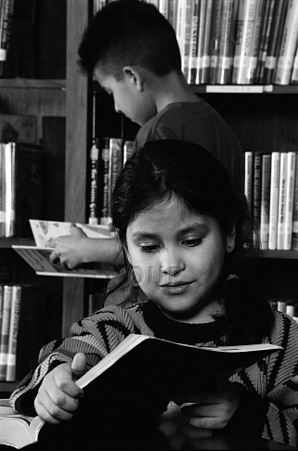 Having given us some advice on choosing a reader, David Dodgson, a teacher to young learners in Ankara, Turkey, now introduces us to some pre-reading activities to encourage young learners to engage with the characters and the story.
Having given us some advice on choosing a reader, David Dodgson, a teacher to young learners in Ankara, Turkey, now introduces us to some pre-reading activities to encourage young learners to engage with the characters and the story.
When using a graded reader as a class text, one of the most important lessons is the first one. The students need to be introduced to the characters, the plot and the theme of the story, all the while capturing their interest. This activation of their background knowledge, or schemata, is essential to ensure the students don’t read the book ‘cold’. I therefore generally spend the first session asking the students to speculate, predict content and profile the main characters, all of which helps raise their awareness both of what kind of book they are going to read and the content within.
This year, my classes have used two different readers: one based on a classic tale and one adapted from a modern animated film. My approach to introducing each was different and I will discuss how I went about it below.
Working with an ‘adapted classic’
The first reader used this year was an adaptation of Frank L. Baum’s The Wonderful Wizard of Oz. I knew most of my students would be familiar with the story, either through a translation of the book or through the classic film version starring Judy Garland, so I started by asking them what they already knew about the story. In groups, they brainstormed the characters, the places and the events they already knew with each group comparing their findings.
I remember one of my colleagues saying “but you’re giving the plot away!” but I didn’t view it like that – after all, most of the children were familiar with the story anyway! Instead, I found this to be a great way to get them pooling and sharing their knowledge. A lot of the vocabulary they would need to understand like tornado, scarecrow, brain, heart and emerald came up naturally within the context of the lesson as well as some important threads of the plot. Moreover, as we were working with a shortened, adapted version of the story, there were bound to be discrepancies between what they knew and what was in the book. Gathering their ideas and knowledge in this way helped form the basis for a later activity looking for those differences, which proved to be a fantastic way to get them to engage more actively with the text.
Working with an original story
Obviously, the above only applies to well-known stories and our other reader this year The Wrong Trousers, while not strictly speaking an ‘original’, was not a familiar tale for my students. Whereas pretty much all of the children had heard of the Wizard of Oz, only a couple in each class knew about the Wallace and Gromit animated film on which the reader was based.
So it was necessary to spend more time on introducing the characters for this story; which I did in two ways. First, I showed the students pictures of the main characters and elicited information about their appearance. I then presented a word cloud with information about them and asked the students to make predictions with the words they saw. They also flicked through the book, looked at the pictures and speculated about what might happen in the plot, leading to some interesting theories about the role of the Penguin!
I had prepared a short text about the two main characters, Wallace and Gromit, to check their predictions against. I used this as the basis for a dictogloss activity, first asking the class to listen and see which of their ideas were correct, and then having them listen again and take notes. They then proceeded to compare notes and collaboratively re-write the text.
By the end of the lesson, they had found out all they needed to know about the characters and engaged in an intense series of activities that had really got them curious about the story and exchanging ideas. This had made them very keen to read the book and I will describe how we approached the chapters and supplemented them in the next post.
In the meantime, please share how you go about introducing a new reader with your classes. I would love to hear if you have tried any similar ideas or completely different ones!


Nice post. Thankx.
Interested to read your approach. I write readers (original and adaptations) and must admit to have a phobia about giving away plots. Do make an exception for very young children – see the new Tall Tales series here: https://esolebooks.com/index.html where familiarity is a key element of the attraction. But when doing ghost stories, for example, I focus on the genre conventions rather than the storyline (see here https://esolebooks.com/ghoststories/signalman.html & here https://esolebooks.com/horror/bodysnatcher.html)
I guess it comes down to whatever works in the classroom.
Thanks for the insight from the author’s side Kieran. The main reason that I have ‘given away’ plots this year is that the students were already familiar with the stories to an extent so it was useful to build on that as an introductory task.
I’ve also found over the years that there is little point in trying to keep twists and surprises in the story secret as the students tend to read ahead in their own time anyway! This was the case with the Wrong Trousers this year. Only a few knew the story from the animated short film but most of them had read the book and listened to the CD at home long before we got round to doing it in class!